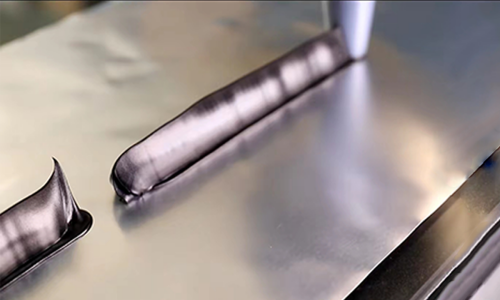1. Whether polyurethane sealant for expansion joints can be used at the top joints. When used at the top seam, the quality requirements for the expansion joint polyurethane sealant are particularly high. The expansion joint polyurethane sealant is requ...
Share
1. Whether polyurethane sealant for expansion joints can be used at the top joints. When used at the top seam, the quality requirements for the expansion joint polyurethane sealant are particularly high. The expansion joint polyurethane sealant is required to be firmly shaped at the top seam without sagging or falling down.
2. The adhesion of expansion joint polyurethane sealant. This is very important for whether it can be waterproof. The first thing to ensure the adhesion is to ensure the quality of the sealant; the second thing is to pay attention to cleaning the dust, oil, gouache, etc. in the gaps to ensure that the gaps are clean and dry, because the expansion joint polyurethane sealant will not bond with dust Phenomenon.
Tensile modulus and displacement capability of one-component polyurethane sealants. Tensile modulus and displacement capacity are the comprehensive performance of the above-mentioned mechanical properties. Tensile modulus represents the strength of the sealant when stretched to a certain elongation rate. Therefore, the modulus is expressed together with the elongation. For example, the tensile modulus is 0.46Mpa when the elongation is 25%. Displacement capacity refers to the displacement capacity that the sealant can withstand when the joint is displaced due to thermal expansion and contraction of the base material. For example, we say that a sealant has a displacement capacity of ±25%, which means that the glue joint using this product can withstand 25% of the stretching and compression of the original width. For example, the original glue joint width is 12mm, and it can be compressed to 9mm and stretched. to 15mm. The displacement capacity can be detected by stretching and compressing cycles or cold drawing and hot pressing cycles.
Tensile strength of one-component polyurethane sealant: Tensile strength is also one of the mechanical properties of the sealant after it is fully cured. Tensile strength is also called tensile strength, tear strength, commonly known as tensile strength. It refers to the ability of a material to resist damage when subjected to tension. The tensile strength value is also detected according to the method specified by the national standard. Sealants must have certain strength requirements according to the needs of their use, especially structural adhesives. The low value of strength is clearly stipulated in the national standard. Sealants with too poor strength cannot meet the needs of use. However, it is unsatisfactory to overemphasize the strength of the sealant and ignore the elasticity.


